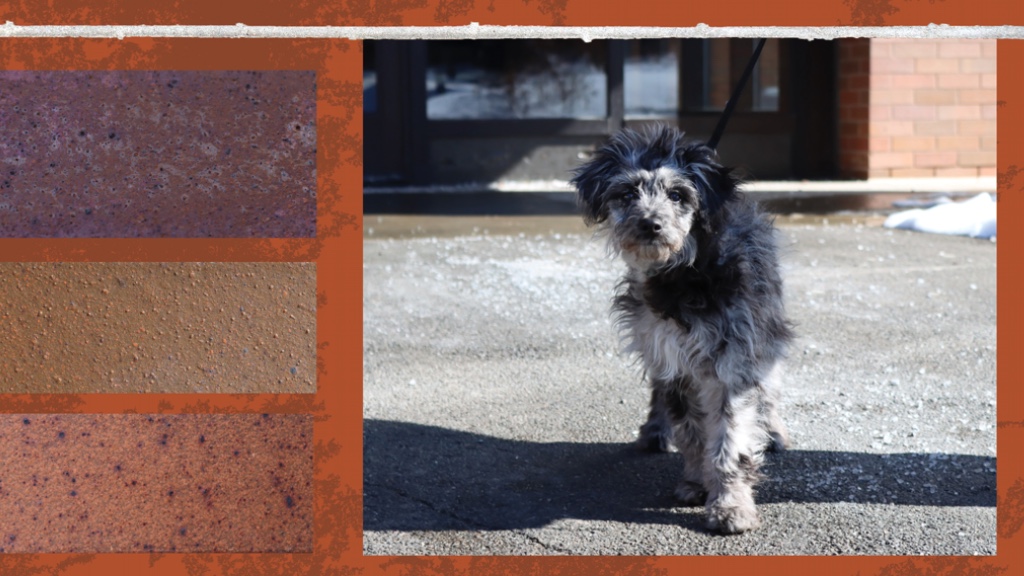While most people come to this academic institution to expand their knowledge in order to one day change the world, I came here for a different reason — the bricks.
I am what most would call a brick expert — a brick connoisseur if you will. While to the layman, all bricks look the same and provide no artistic value, I look at bricks and see something much different. Each brick tells a story, an epic that cannot be told through any other medium.
With this piece, I hope to open your eyes to the world that you both see every day, but also have never seen before.
Examples of Bricks
We start our journey outside the SAU. As you can see, this brick is not your traditional tan color. While it may have started that color, the aging process has turned this brick a dark purple or blue. This indicates a poorly maintained, yet well-seasoned, brick.
Due to COVID-19, Reporter has asked me not to taste the bricks, and has made sure that I tell you all not to lick the bricks outside.
However, I am a professional, and I am willing to do ANYTHING for my craft. Brick tasting should only be done by professionals such as myself, and in a safe and controlled environment.
Seriously, don't lick the fucking bricks. (I'm not kidding. Don't do it.)
While one would think the blue hue would indicate a blue raspberry flavor, this brick has a very earthy taste, standard for a normal brick. The aging process does add some depth to the flavor profile, but overall, no uncharacteristic tastes.
This is a very classic brick with a tinge of personality. 7/10.
"This brick has a very earthy taste, standard for a normal brick."
We next head to the Gene Polisseni Center.
This brick looks very well-kept, with little aging taken place. This will give more of a fresh mouth feel.
The location of this brick being connected to the ice hockey arena gives it notes of saltiness, most likely due to the sweaty, muscular and beautiful men that practice and play there.
The downside to this brick is the rough texture that was molded into the shape. This indicates that the farmer who grew these bricks was more concerned with quantity over quality, thus allowing more misshapen bricks to be sold.
Overall, this brick receives an 8/10.
Surprisingly, this is actually not a brick at all.
While someone who does not critique bricks for a living might not be able to tell, this is actually a dog, and not a brick.
However, just to be sure, I did conduct a taste test and found a lot of hair, which is not common in most bricks. It also barked at me, which was a clear indication that it was in fact, not a brick.
I still very much enjoyed seeing this not brick, and give it a 12/10.
The next brick highlighted is located inside of the Saunders College of Business.
This building is named after the man who, in 1987, accidentally stumbled into the building while exploring the campus.
He then claimed to discover it Christopher Columbus style, and named it after himself.
He, of course, was the last human to ever enter that building, due to nobody knowing where or what it is, and it has been abandoned ever since.
I expected the building to be officially named after me once I entered, but of course, nobody was there.
The constant emptiness of the building allows for very clean and untouched bricks.
This can be a positive and a negative, however. Much like how the aging of cheese creates a more full-bodied and rich taste, so too do bricks.
This brick has a more dense and slightly fruity taste, as if I am tasting it right out of the factory.
This flavor profile is not for everyone, but those who enjoy it will certainly find it here, in the building I already forgot the name of.
8/10 for the brick, 1/10 for the building not being named after me.
Our last stop on our journey is the Liberal Arts Hall, where we find this wonderful example of a brick.
I want to highlight this brick last because it perfectly encapsulates all of the lessons we have learned throughout this process.
The blue holes allow for a great profile, the shape is very uniform with lots of slight bumps which indicate quality material and mouth feel, the base color is a vibrant orange — this is a terrific brick through and through.
Anyone with a somewhat critical eye for bricks can look at this one and know it is of the highest quality. Any brick collector would pay upwards of $10,000 USD (0.2032 Bitcoin) for a brick of this caliber.
This is an obvious 10/10, and anyone who disagrees clearly doesn't understand what a brick truly is.
"Anyone with a somewhat critical eye for bricks can look at this one and know it is of the highest quality."
Conclusion
Learning to see a brick for what it really represents is a difficult task. We are conditioned by the society we live in to focus on the trivial beauty — like clothing, art, people — and not focus on the beauty that comes from the utilitarian.
I encourage everyone to step out of their comfort zone and find beauty in the things we aren't meant to find beauty in.
The simplest stories are the most thought-provoking, and stories unspoken often have the most to say.








